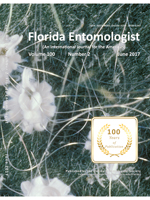Syllophopsis sechellensis (Emery) (formerly Monomorium sechellense) (Hymenoptera: Formicidae) is a small, inconspicuous ant species, native to the Old World tropics, but has spread by human commerce to other parts of the world. The extent of its original native range is unclear. Here, we examined the worldwide distribution of S. sechellensis, particularly its spread to the New World. We compiled published and unpublished S. sechellensis specimen records from >160 sites. We documented the earliest known S. sechellensis records for 43 geographic areas (countries, island groups, and West Indian islands), including many islands for which we found no previously published records, in Southeast Asia (Singapore), the Indian Ocean (Comoro Islands, Îles Éparses, Mascarene Islands), Pacific Ocean (Palau), Atlantic Ocean (Cape Verde Islands), and the Caribbean (Guadeloupe, Grenada, Martinique, Mona, Puerto Rico, St. Croix, St. Lucia, St. Martin, St. Thomas, St. Vincent, and Trinidad). The geographic ranges of S. sechellensis and other Syllophopsis species suggest that S. sechellensis may be native to Madagascar and neighboring islands in the western Indian Ocean or to Southeast Asia or both. The earliest known record of S. sechellensis in the New World was collected in Barbados in 2003. We recorded this species on 11 additional West Indian islands. This finding might indicate that S. sechellensis is rapidly spreading through the West Indies. Alternatively, it may be that this inconspicuous ant has simply been overlooked or misidentified in this region.
How to translate text using browser tools
1 June 2017
Worldwide Distribution of Syllophopsis sechellensis (Hymenoptera: Formicidae)
James K. Wetterer,
Mostafa R. Sharaf

Florida Entomologist
Vol. 100 • No. 2
June 2017
Vol. 100 • No. 2
June 2017
biogeografía
biogeography
biological invasion
especies exoticas
especies invasivas
exotic species
fauna de la isla




